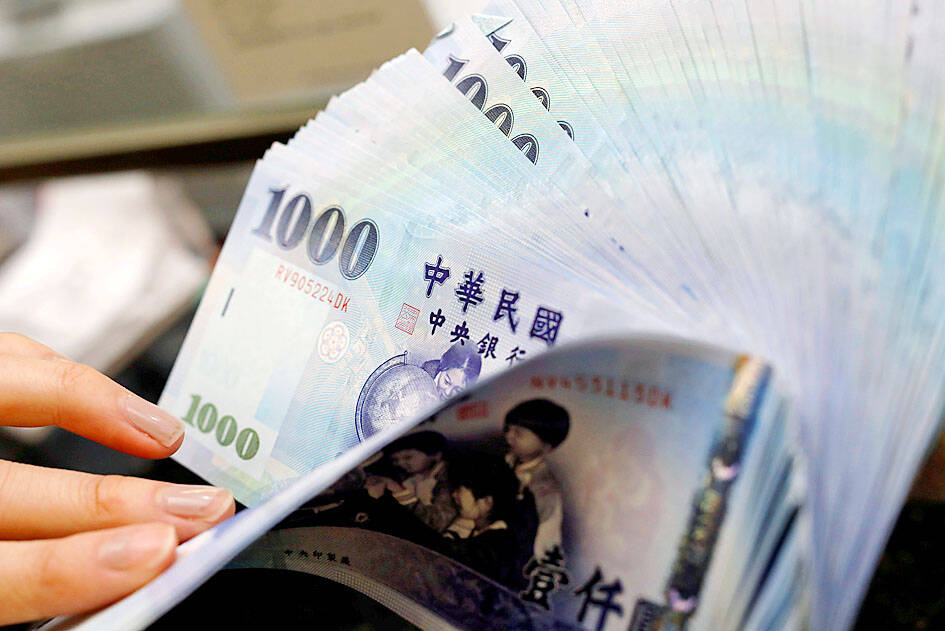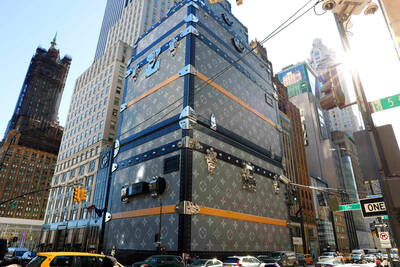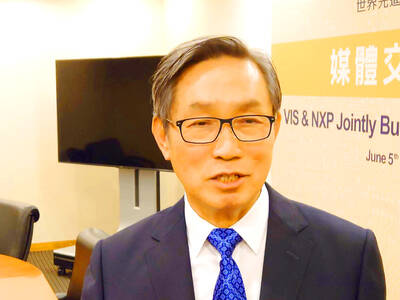The New Taiwan dollar is on the verge of overtaking the yuan as Asia’s best carry-trade target given its lower risk of interest-rate and currency volatility.
A strategy of borrowing the New Taiwan dollar to invest in higher-yielding alternatives has generated the second-highest return over the past month among Asian currencies behind the yuan, based on the Sharpe ratio that measures risk-adjusted relative returns.
The New Taiwan dollar may soon replace its Chinese peer as the region’s favored carry trade tool, analysts say, citing Beijing’s efforts to support the yuan that can create wild swings in borrowing costs. In contrast, Taiwan’s central bank can afford to be more relaxed as any weakness in the local currency ends up benefiting the export-driven economy and can attract artificial intelligence-led capital flows into local stocks.

Photo: Reuters
“The Taiwan dollar has been one of the better funding currencies in Asia along with the offshore yuan, but with recent intervention risks in the yuan placing bigger chances of a short squeeze, Taiwan dollar becomes much more attractive,” Bloomberg Intelligence chief Asia foreign-exchange and rates strategist Stephen Chiu (趙志軒) said.
Elsewhere in Asia, the yen is facing a cycle of interest-rate hikes, while other potential funding currencies are either more expensive to short or have higher volatility, Chiu said.
The yuan’s appeal as a funding source for carry trades is weakening as the People’s Bank of China steps up its currency defense ahead of anticipated tariff hikes under the second term of US president-elect Donald Trump. The Chinese central bank’s measures, ranging from setting an artificially strong reference exchange to draining liquidity and verbal warnings, have turned the offshore yuan into Asia’s third-most volatile currency in the past month.
Meanwhile, the New Taiwan dollar is starting to look even more attractive as a funding source after weakening beyond what was seen as a key psychological level of 33 per US dollar for the first time in about nine years on Monday.
The New Taiwan dollar is poised to decline further, along with its regional peers, with Trump’s return to the White House accentuating risks from more challenging trade dynamics to a less dovish US Federal Reserve, HSBC Holdings PLC Asia foreign-exchange research head Joey Chew (周淑芬) said.
“Nevertheless, with fundamentals robust, Taiwan’s economy is relatively well placed to ride through this near-term volatility,” with a lower risk for aggressive currency intervention from the central bank, Chew said.

TAKING STOCK: A Taiwanese cookware firm in Vietnam urged customers to assess inventory or place orders early so shipments can reach the US while tariffs are paused Taiwanese businesses in Vietnam are exploring alternatives after the White House imposed a 46 percent import duty on Vietnamese goods, following US President Donald Trump’s announcement of “reciprocal” tariffs on the US’ trading partners. Lo Shih-liang (羅世良), chairman of Brico Industry Co (裕茂工業), a Taiwanese company that manufactures cast iron cookware and stove components in Vietnam, said that more than 40 percent of his business was tied to the US market, describing the constant US policy shifts as an emotional roller coaster. “I work during the day and stay up all night watching the news. I’ve been following US news until 3am

Six years ago, LVMH’s billionaire CEO Bernard Arnault and US President Donald Trump cut the blue ribbon on a factory in rural Texas that would make designer handbags for Louis Vuitton, one of the world’s best-known luxury brands. However, since the high-profile opening, the factory has faced a host of problems limiting production, 11 former Louis Vuitton employees said. The site has consistently ranked among the worst-performing for Louis Vuitton globally, “significantly” underperforming other facilities, said three former Louis Vuitton workers and a senior industry source, who cited internal rankings shared with staff. The plant’s problems — which have not

TARIFF CONCERNS: The chipmaker cited global uncertainty from US tariffs and a weakening economic outlook, but said its Singapore expansion remains on track Vanguard International Semiconductor Corp (世界先進), a foundry service provider specializing in producing power management and display driver chips, yesterday withdrew its full-year revenue projection of moderate growth for this year, as escalating US tariff tensions raised uncertainty and concern about a potential economic recession. The Hsinchu-based chipmaker in February said revenues this year would grow mildly from last year based on improving supply chain inventory levels and market demand. At the time, it also anticipated gradual quarter revenue growth. However, the US’ sweeping tariff policy has upended the industry’s supply chains and weakened economic prospects for the world economy, it said. “Now

COLLABORATION: Given Taiwan’s key position in global supply chains, the US firm is discussing strategies with local partners and clients to deal with global uncertainties Advanced Micro Devices Inc (AMD) yesterday said it is meeting with local ecosystem partners, including Taiwan Semiconductor Manufacturing Co (TSMC, 台積電), to discuss strategies, including long-term manufacturing, to navigate uncertainties such as US tariffs, as Taiwan occupies an important position in global supply chains. AMD chief executive officer Lisa Su (蘇姿丰) told reporters that Taiwan is an important part of the chip designer’s ecosystem and she is discussing with partners and customers in Taiwan to forge strong collaborations on different areas during this critical period. AMD has just become the first artificial-intelligence (AI) server chip customer of TSMC to utilize its advanced